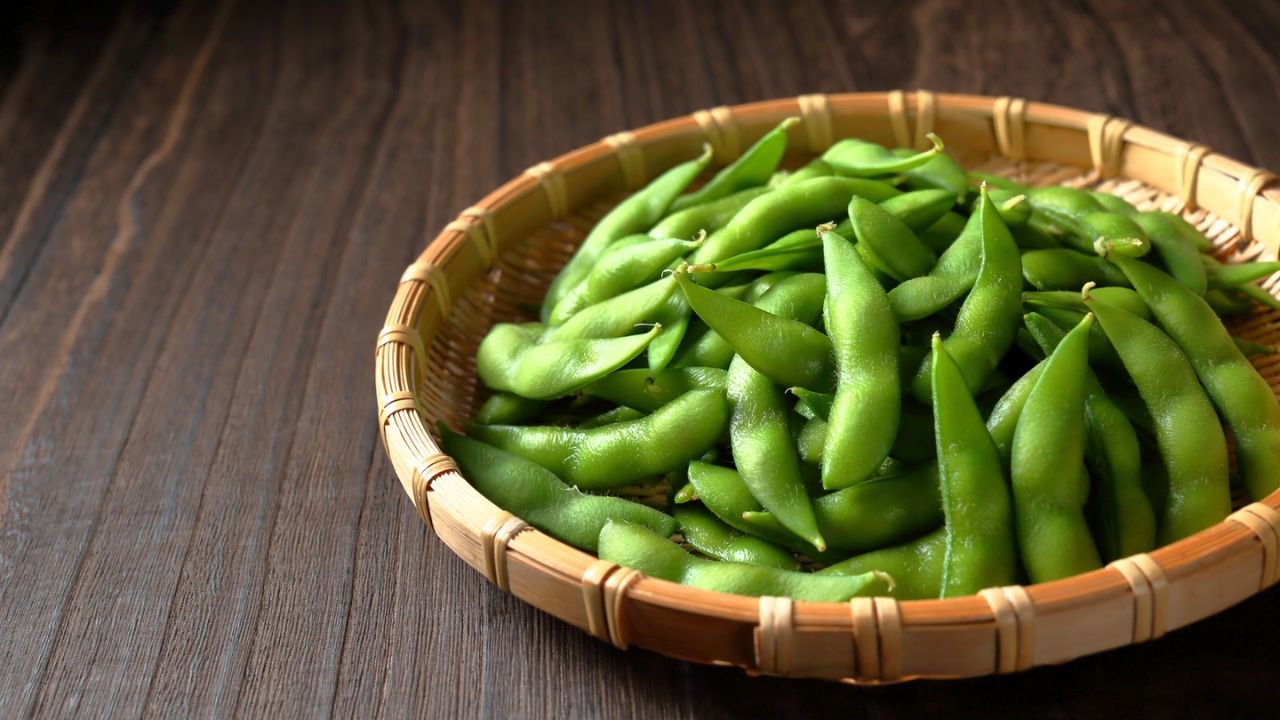Edamame, the vibrant, green, immature soybeans, has been a beloved ingredient in various cuisines for centuries. Originating from East Asia, particularly Japan and China, these nutrient-packed beans have gained immense popularity worldwide. Today, edamame transcends its initial role as an appetizer at Japanese restaurants and finds its way into salads, stir-fries, and even smoothies. This article dives deep into the remarkable nutritional profile of edamame and explores its health benefits, while providing practical tips on selecting, storing, and even cooking it to perfection.
Whether you’re a health enthusiast, vegetarian, or just a foodie curious about incorporating edamame into your meals, you’re in for a treat (literally and figuratively). Read on to discover why this “small bean” deserves a prominent spot in your diet.
Nutritional Profile of Edamame
Macronutrients
Edamame boasts an impressive macronutrient balance. One cup of cooked edamame (approximately 155 grams) contains:
- Calories: About 190, making it a low-calorie snack option
- Protein: Nearly 18 grams, offering a complete amino acid profile beneficial for vegetarians and vegans
- Fat: 8 grams, primarily comprising healthy unsaturated fats
- Carbohydrates: 14 grams, including 8 grams of dietary fiber which supports digestion
Micronutrients
Edamame also packs a punch when it comes to vitamins and minerals, such as:
- Folate (121% of the daily recommended intake): Promotes healthy cell function and is particularly crucial for pregnant women.
- Potassium (10%): Helps regulate blood pressure and supports cardiovascular health.
- Magnesium (16%): Plays a role in over 300 biochemical reactions, including muscle contractions and energy production.
Health-boosting Compounds
Edamame contains isoflavones, plant-based compounds that mimic estrogen, which could contribute to several long-term health benefits. Additionally, antioxidants like vitamin C and beta-carotene help combat oxidative stress.
Health Benefits of Edamame
Supports Heart Health
Edamame is known for its cholesterol-lowering properties. The high levels of soy protein and isoflavones help reduce LDL (bad cholesterol) and increase HDL (good cholesterol). Its potassium content further aids in promoting optimal blood pressure levels, reducing strain on the heart.
Aids in Diabetes Management
With its low glycemic index and rich fiber content, edamame aids in stabilizing blood sugar levels. The protein and fiber together reduce sugar spikes, making it an excellent snack choice for people managing diabetes.
Helps with Weight Management
Thanks to its combination of high protein and dietary fiber, edamame keeps you fuller for longer. Adding edamame as a snack or ingredient in meals reduces the likelihood of overeating and helps maintain a healthy weight.
Reduces Cancer Risk
Isoflavones in edamame act as antioxidants, protecting your cells from damage caused by free radicals. Studies suggest this can play a role in reducing the risk of certain hormone-dependent cancers, such as breast and prostate cancers.
How to Select and Store Edamame
Selecting Edamame
When buying edamame, you’ll usually find it in three forms:
- Fresh pods in the produce section
- Frozen pods or shelled edamame in the freezer aisle
- Pre-packaged or seasoned edamame.
For the best quality, look for bright green pods (if fresh) and avoid discolored shells or wilted beans. Frozen edamame is often flash-frozen, retaining both nutritional value and flavor.
Storing Edamame
- Refrigerate fresh edamame: Store unwashed pods in a dry, airtight container for up to 3 days.
- Freeze for long-term use: Place fresh or cooked edamame in a freezer-safe bag, extending shelf life to 3-6 months.
- Keep frozen edamame sealed until ready to use.
Cooking and Preparation
Methods of Cooking
- Steamed: Place edamame pods in a steamer basket and steam for about 5 minutes.
- Boiled: Boil for 3-5 minutes in salted water to enhance flavor.
- Roasted (for a crunchy texture): Toss shelled edamame with olive oil and spices, bake at 400°F for 15-20 minutes.
Recipe Ideas
- Edamame Salad: Toss shelled edamame with cherry tomatoes, cucumber, and a tangy vinaigrette.
- Stir-fry: Pair edamame with noodles and your favorite vegetables for a quick and nutritious dinner.
- Edamame Dip (alternative to hummus): Blend cooked edamame with garlic, olive oil, and lemon juice until smooth.
Potential Side Effects and Considerations
- Allergic Reactions: Although rare, some individuals may be allergic to soy products. Be cautious if you’re trying edamame for the first time.
- Moderation Matters: Too much soy intake can interfere with thyroid function in individuals with existing thyroid issues, so consume edamame in moderate amounts.
- Digestive Sensitivities: The high fiber content might cause bloating if eaten in excessive quantities.
You May Also Like: Panera Broccoli Cheddar Soup Nutrition: Everything You Need to Know
Conclusion
Edamame is more than just a healthy soy snack—it’s a versatile, nutrient-rich superfood that supports overall well-being. Its heart-healthy benefits, role in diabetes management, and aid in weight control make it the perfect addition to almost any diet. Whether you enjoy it as a snack, part of a meal, or as your go-to superfood, there’s no denying its potential to elevate your diet and health.
Looking to try some edamame recipes? Start with the ones listed above or experiment to make your own creations. Enjoy the benefits and deliciousness of this incredible green powerhouse!
FAQs
Is edamame a healthy snack?
Absolutely! With high protein, fiber, and a low-calorie count, edamame makes for a healthy and filling snack option.
Can you eat edamame raw?
No, edamame must be cooked before consuming to eliminate natural toxins present in raw soybeans.
How often can I eat edamame?
Edamame can be consumed a few times a week in moderate amounts as part of a balanced diet.
Is edamame good for vegans and vegetarians?
Yes, it is an excellent source of plant-based protein and provides all essential amino acids, making it ideal for vegans and vegetarians.
What are the best ways to serve edamame?
Enjoy it as a snack with a sprinkle of sea salt, stir it into salads or stir-fry dishes, or try it roasted as a crunchy treat.











